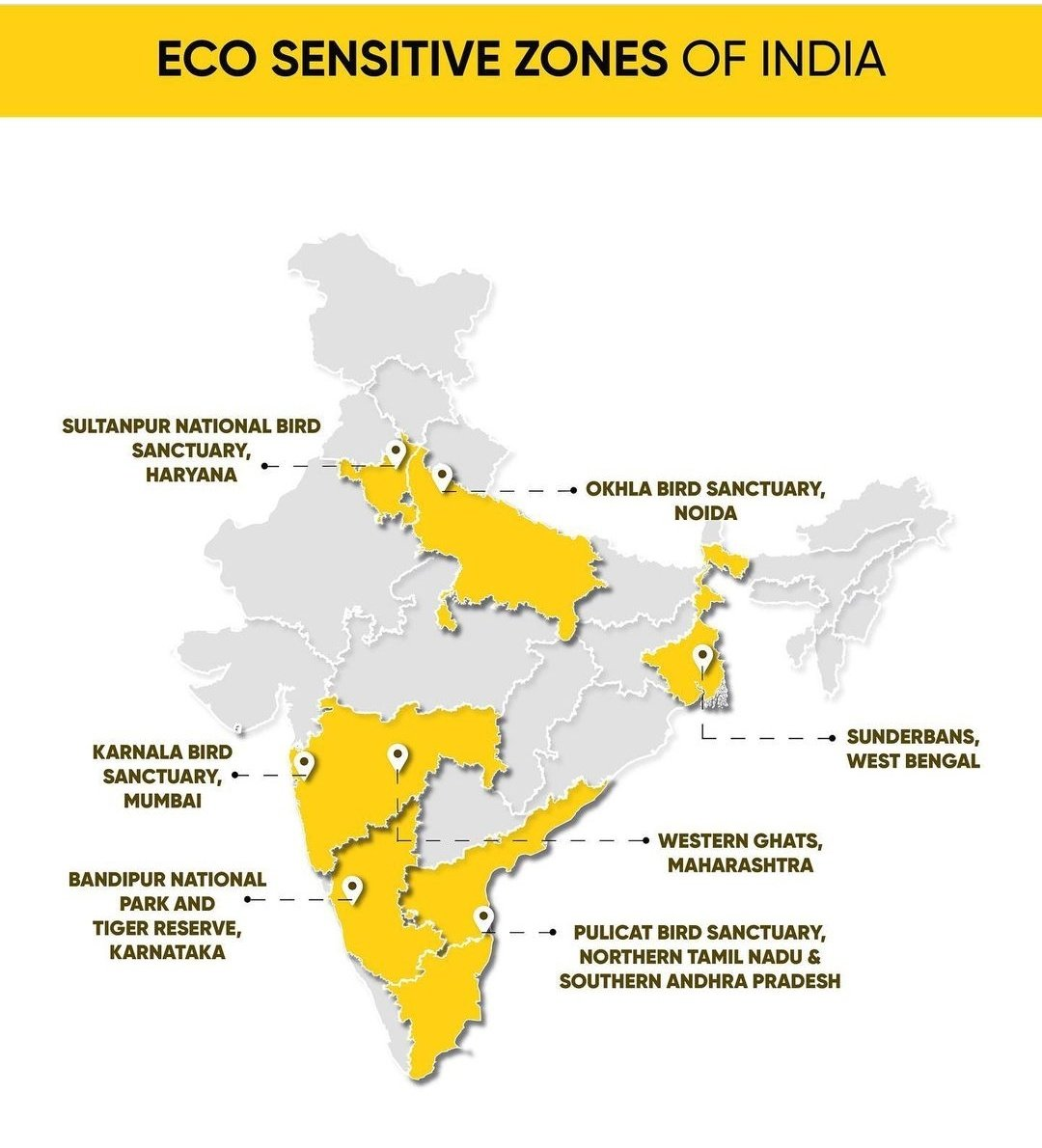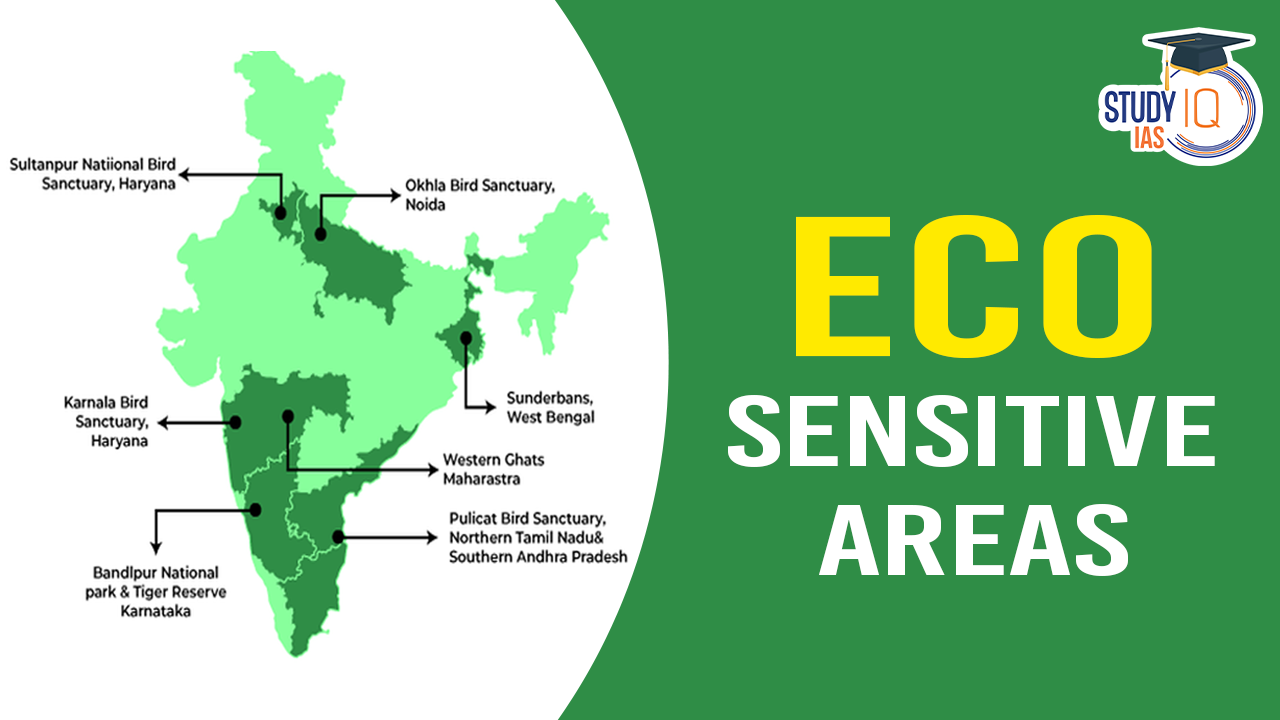Table of Contents
Context
- Karnataka, Maharashtra, and Goa are among the six states where the Centre has proposed eco-sensitive areas (ESA) to protect the Western Ghats.
- These three states have requested a reduction in the extent of these ESAs to facilitate development projects.
| Fact |
| In 2013, the Kasturirangan committee submitted a report recommending that 37% of the Western Ghats, covering an area of 59,940 sq km, be classified as Eco-Sensitive Areas (ESA). |
Eco-Sensitive Zones (ESZs)
- Definition: Eco-Sensitive Zones (ESZ) or Ecologically Fragile Areas are designated regions within 10 km of protected areas, national parks, and wildlife sanctuaries.
- Notification: ESZs are notified by the Ministry of Environment, Forest and Climate Change (MoEFCC), Government of India, under the Environmental Protection Act, 1986.

| Additional Information |
|
- Extension Beyond 10 km: In cases involving sensitive corridors, connectivity, and ecologically important patches crucial for landscape linkage, areas beyond the 10 km width can also be included in the eco-sensitive zone.
- Purpose: The primary aim is to regulate certain activities around national parks and wildlife sanctuaries to minimise the negative impacts on the fragile ecosystem surrounding the protected areas.
- Activities Regulations:
- Prohibited Activities: Commercial mining, sawmills, pollution-causing industries (air, water, soil, noise), establishment of major hydroelectric projects, and commercial use of wood are prohibited within ESZs.
- Regulated Activities: Activities such as tree felling, establishing hotels and resorts, commercial use of natural water, erecting electrical cables, drastic changes in agricultural systems (e.g., heavy technology, pesticides), and road widening are regulated within ESZs.
- Permitted Activities: Ongoing agricultural or horticultural practices, rainwater harvesting, organic farming, use of renewable energy sources, and adoption of green technology are permitted within ESZs.
Significance of ESZs
- Minimise Development Impact: To reduce the impact of urbanisation and other development activities near protected areas.
- In-Situ Conservation: ESZs support the conservation of endangered species in their natural habitat.
- The conservation of the One-horned Rhino in Kaziranga National Park, Assam, is an example of in-situ conservation facilitated by ESZs.
- Reduce Forest Depletion and Man-Animal Conflict: ESZs help minimise forest depletion and mitigate conflicts between humans and wildlife.
- Protect Fragile Ecosystems: Declaring areas as ESZs around protected zones acts as a buffer, creating a transition zone from areas of high protection to those with lesser protection.
- ESZs help in creating shaded spaces, ensuring the availability of cool water in public places, and implementing other measures in heat action plans to deal with extreme heat impacts.


 SSC MTS Salary 2025, Check Highest Salar...
SSC MTS Salary 2025, Check Highest Salar...





















